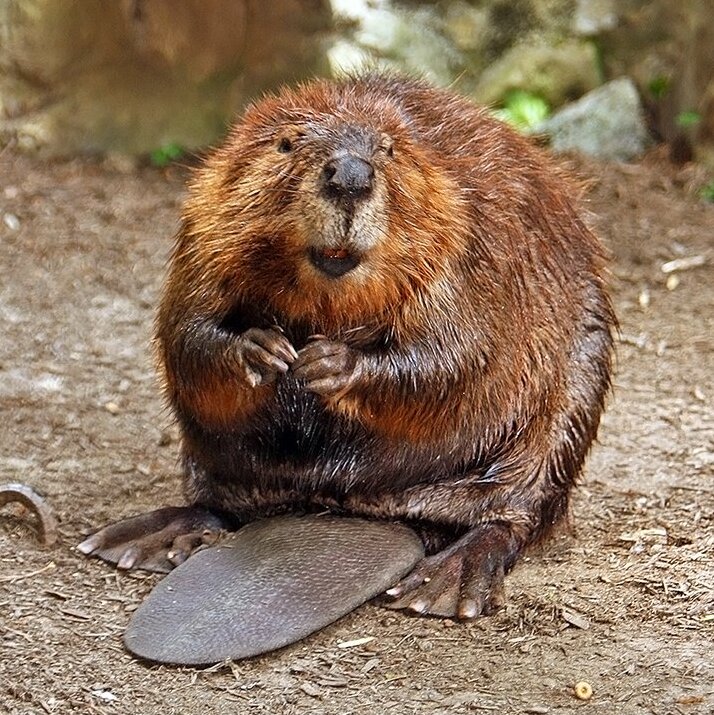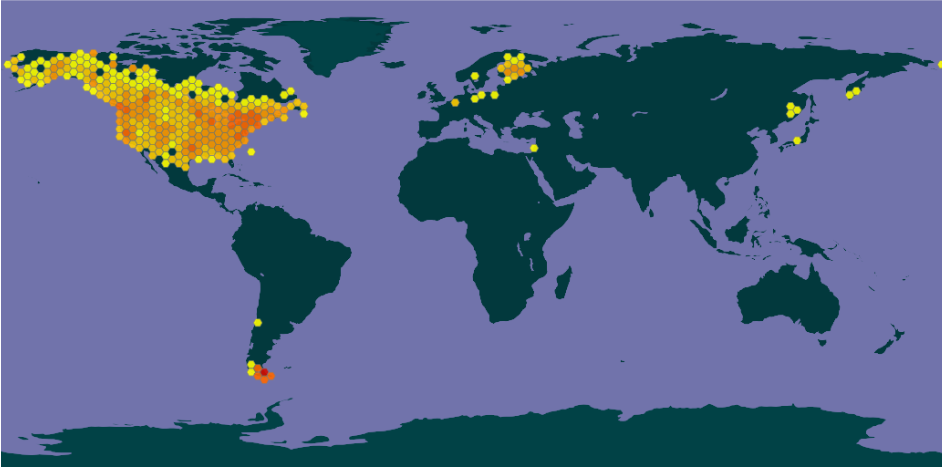Castor canadensis Kuhl, 1820
North American beaver

| Kingdom | Animalia |
| Phylum | Chordata |
| Class | Mammalia |
| Order | Rodentia |
| Family | Castoridae |
| Genus | Castor |
| Species | Castor canadensis Kuhl, 1820 |
Listen to the SONIFIED SPECIES

Known records of this species

Taxon Description
The North American beaver (Castor canadensis) is one of two extant beaver species, along with the Eurasian beaver (Castor fiber). It is native to North America and has been introduced in South America (Patagonia) and Europe (primarily Finland and Karelia). The North American beaver is one of the official national wildlife of Canada symbols and is the official state mammal of Oregon and New York. North American beavers are widespread across the continental United States, Canada, southern Alaska, and some parts of northern Mexico.
Description
The beaver is the largest rodent in North America and competes with its Eurasian counterpart, the European beaver, for being the third-largest in the world, both following the South American capybara and lesser capybara. The European species is slightly larger on average but the American has a larger known maximum size. Adults usually weigh from 11 to 32 kg (24 to 71 lb), with 20 kg (44 lb) being typical. In New York, the average weight of adult male beavers was 18.9 kg (42 lb), while non-native females in Finland averaged 18.1 kg (40 lb). However, adults of both sexes averaged 16.8 kg (37 lb) in Ohio. The species seems to conform to Bergmann’s rule, as northern animals appear to be larger. In the Northwest Territory, adults weighed a median of 20.5 kg (45 lb). The American beaver is slightly smaller in average body mass than the Eurasian species. The head-and-body length of adult North American beavers is 74–90 cm (29–35 in), with the tail adding a further 20–35 cm (7.9–13.8 in). Very old individuals can exceptionally exceed normal sizes, weighing more than 40 kg (88 lb) or even as much as 50 kg (110 lb) (higher than the maximum known for the Eurasian beaver).
Distribution
Before their near-extirpation by trapping in North America, beavers were practically ubiquitous and lived from south of the arctic tundra to the deserts of northern Mexico, and from the Atlantic to the Pacific Oceans. They are widely distributed in boreal and temperate ecoregions, where populations are rebounding from historic over-exploitation. Recently, beaver have been observed colonizing arctic tundra, likely as a result of climate-induced increases in riparian shrubs.